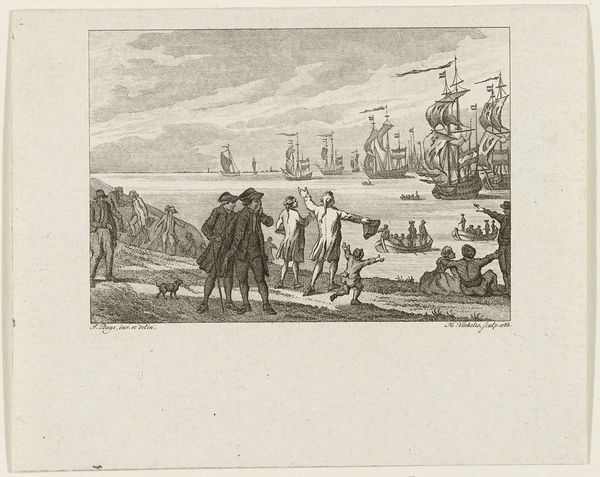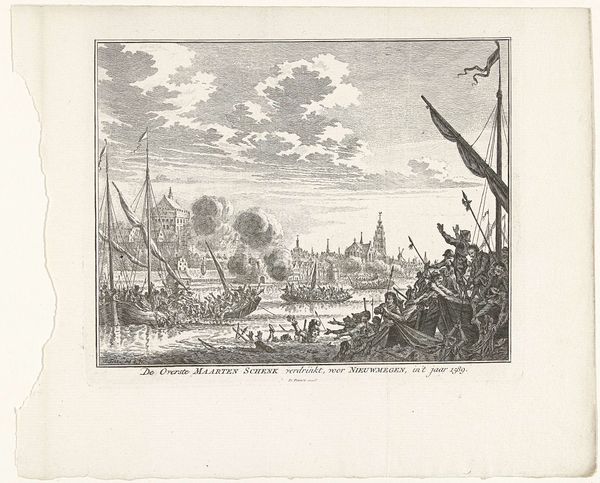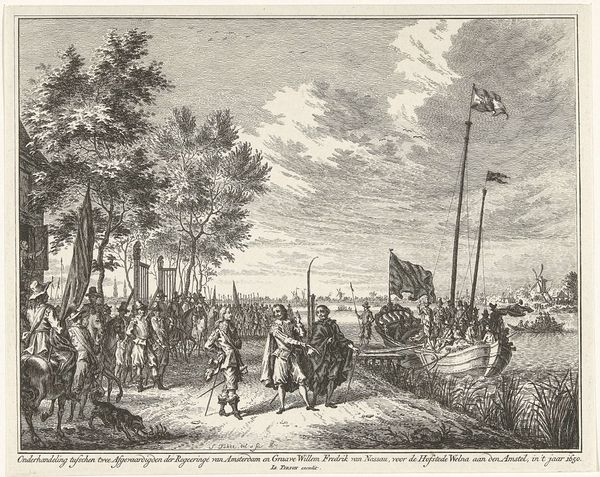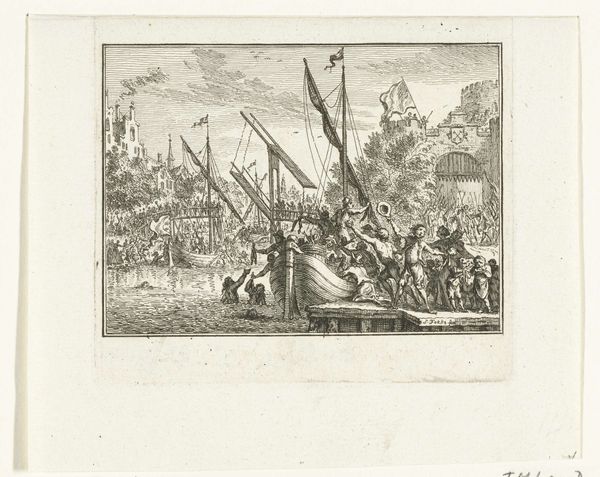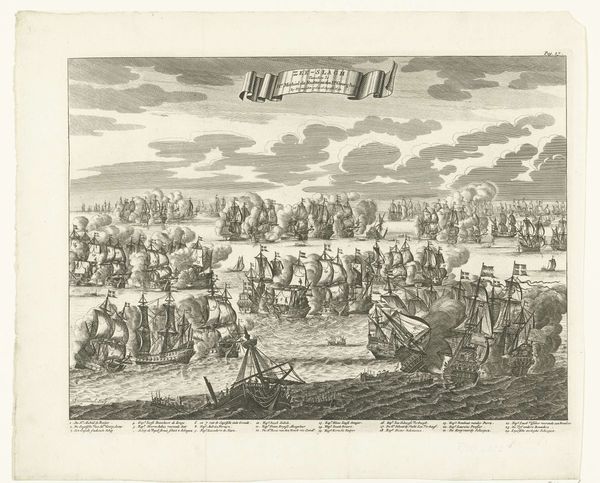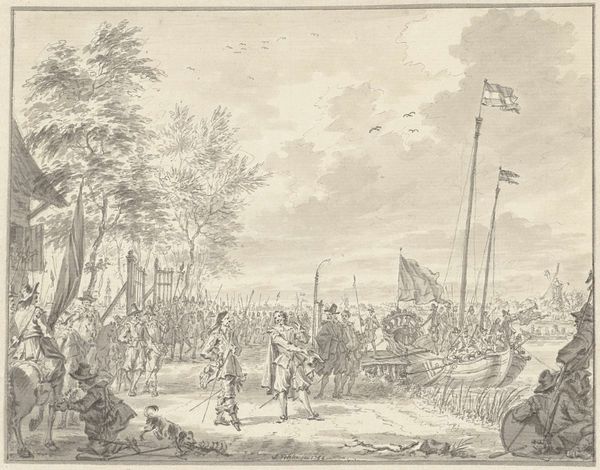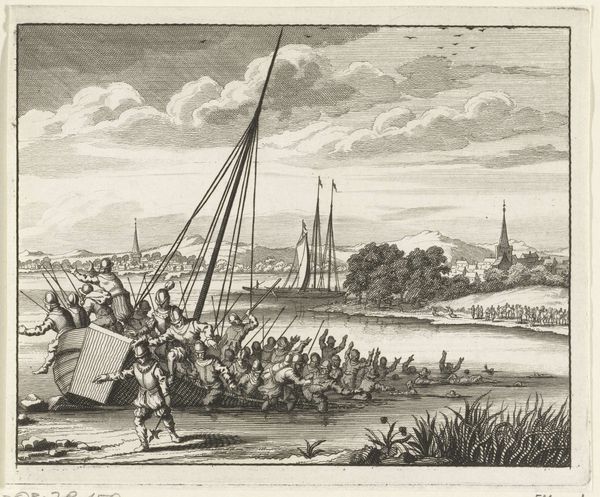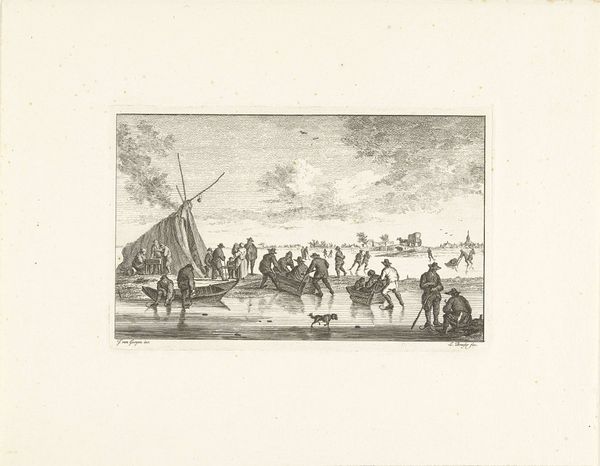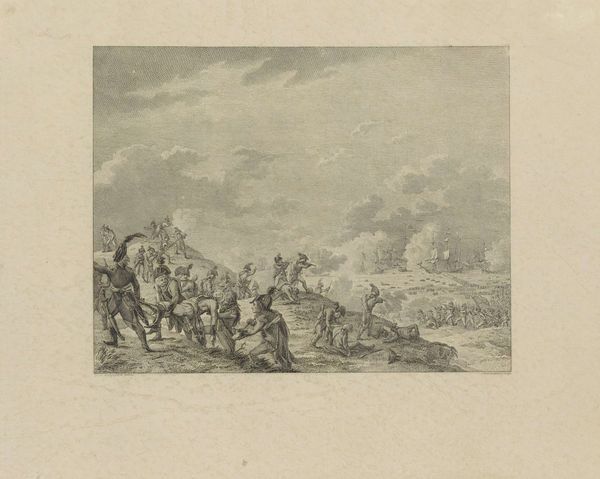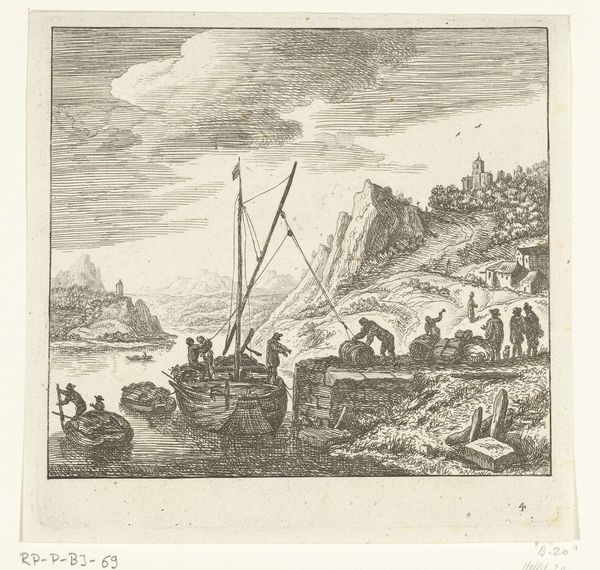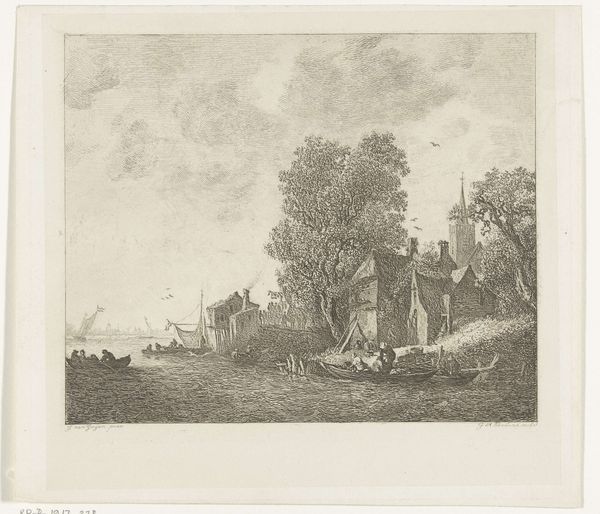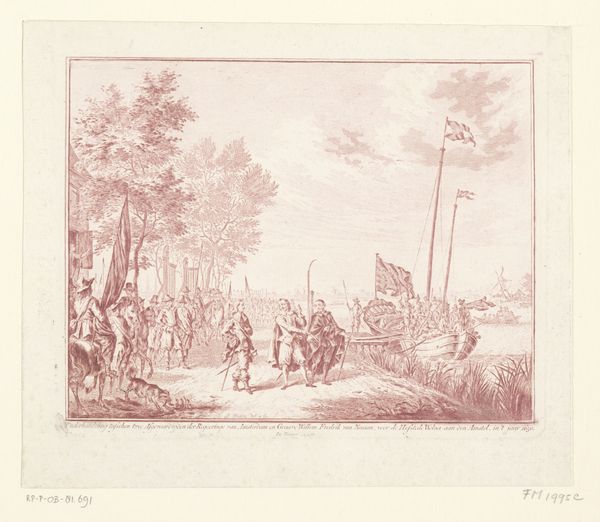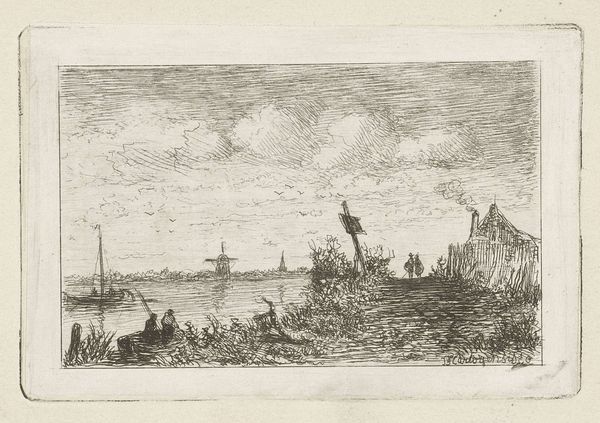
Onderhandeling tussen afgevaardigden van Amsterdam en graaf Willem Frederik bij Hofstede Welna aan de Amstel, 1650 1754 - 1755
0:00
0:00
simonfokke
Rijksmuseum
engraving
#
narrative-art
#
dutch-golden-age
#
old engraving style
#
landscape
#
history-painting
#
engraving
Dimensions: height 173 mm, width 203 mm
Copyright: Rijks Museum: Open Domain
Curator: Here we have Simon Fokke’s engraving from around 1754-1755, depicting “Onderhandeling tussen afgevaardigden van Amsterdam en graaf Willem Frederik bij Hofstede Welna aan de Amstel, 1650”—which translates to the negotiation between delegates from Amsterdam and Count William Frederick at Hofstede Welna on the Amstel River in 1650. Editor: My first impression is the incredibly detailed rendering for an engraving! The landscape almost feels secondary to the density of the figures and boats, the materiality looks intriguing for such a precise process. Curator: Precisely! And considering its historical context, remember that this image comes more than a century after the event. It is an imagined, yet still very deliberate depiction, intended to portray the shifting political power and fragile peace during a tumultuous era in Dutch history. Consider the power dynamics visualized: The Amsterdammers, representatives of burgeoning mercantile power, meet with Willem Frederik. Editor: And it's fascinating how Fokke’s labor here translates into political symbolism. Think about the repetitive act of carving, each line a testament to the growing agency of Amsterdam’s merchant class. The level of detail, such as rendering each member of the entourage so meticulously, conveys a distinct kind of artisanal production. Curator: Yes, we see these tensions visualized here through Fokke's labor. And we have to contextualize the scene. This meeting took place on the Amstel River near a country estate. By situating the negotiation within this setting, Fokke points towards themes of commerce but also towards privilege. Editor: Do you see it suggesting consumption, too? Look at the implied movement and flow; it is a river of goods as much as people and ideas. Those boats themselves – imagine the material investment, the skilled labor, and the global resources represented right there. Curator: Absolutely, the waterway enabled Amsterdam’s global dominance! The negotiation would have addressed topics of sovereignty and the economic autonomy for Amsterdam. I wonder too, about those excluded in the narrative. Where are the colonial enterprises? Are we intended to read their absence as innocence? Editor: An omission is always deliberate. It asks the viewer, who are you protecting by ignoring exploitation and extracting raw material? As the physical lines of the engraving intertwine, so do political narratives with material conditions of the time. It really challenges our notion about "high" and "low" art, and their presumed different roles. Curator: Agreed. Fokke’s work grants us a window into how artists can visualize societal dynamics and narratives, which in turn enable them to legitimize the status quo. Editor: It gives you insight into how a historic rendering gains such potent effect. It is also such a perfect reflection of our ongoing need to evaluate the impact of these visualizations.
Comments
No comments
Be the first to comment and join the conversation on the ultimate creative platform.
